With the climate crisis at the forefront of global challenges, the Royal Institute of British Architects (RIBA) has set forth an important initiative, the 2030 Climate Challenge. Below we delve into this and share the nuances of the initiative and its implications for the architectural world.
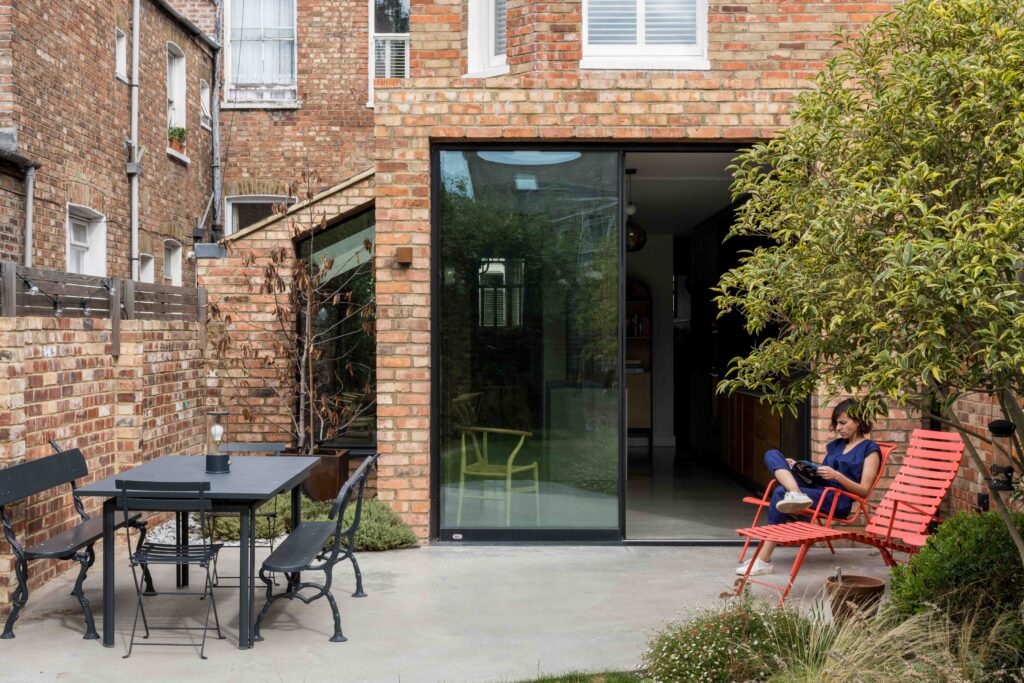
Chapter 1: RIBA’s 2030 Climate Challenge: Paving the Path for Sustainable Architecture
In the ever-evolving landscape of architectural design and construction, the need for sustainability has become paramount. As the world grapples with the pressing issue of climate change, architects are at the forefront of a transformative movement towards environmentally responsible practices. Among the vanguard of this movement is the Royal Institute of British Architects (RIBA), which has set forth a visionary initiative known as the “2030 Climate Challenge”. This initiative embodies a commitment to fostering sustainable architects who will shape the future of the built environment in the United Kingdom.
RIBA’s Vision for Sustainability
At the heart of the 2030 Climate Challenge are RIBA’s ambitious objectives. This challenge serves as a call to action for RIBA Chartered Practices, urging them to embrace and uphold specific performance targets. These targets encompass critical aspects of sustainability, including energy use, water consumption, and embodied carbon. By delineating these voluntary benchmarks, RIBA aspires to guide the architectural community towards a collective goal: achieving a net-zero carbon future for the entire UK building stock by the year 2050.
Energy Efficiency: A Pillar of Sustainable Design
One of the primary pillars of RIBA’s 2030 Climate Challenge is energy efficiency. Sustainable architects, under the guidance of RIBA, are encouraged to develop innovative design solutions that minimise energy consumption. This involves harnessing natural light, implementing passive heating and cooling systems, and incorporating renewable energy sources wherever feasible. By setting specific targets for energy efficiency, RIBA seeks to reduce the carbon footprint of new and existing buildings, effectively curbing the sector’s contribution to climate change.
Water Conservation: A Precious Resource Preserved
Another vital facet of sustainable architecture lies in water conservation. The challenge urges architects to adopt practices that mitigate water wastage, both in the construction and operational phases of a building’s lifecycle. Sustainable architects employ techniques such as rainwater harvesting, greywater recycling, and low-flow fixtures to achieve these goals. RIBA recognises that safeguarding this precious resource is paramount in the fight against climate change and environmental degradation.
Embodied Carbon: Building Responsibly for the Future
A central tenet of RIBA’s 2030 Climate Challenge is the concept of embodied carbon. Sustainable architects are tasked with minimising the carbon emissions associated with a building’s construction materials and processes. This involves carefully selecting sustainable materials, promoting circular economy principles, and reducing waste during construction. By focusing on embodied carbon, architects can contribute significantly to the long-term sustainability of the built environment, aligning their practices with RIBA’s vision of a net-zero carbon future.
The Role of Sustainable Architects
Sustainable architects are the vanguards of change in the architectural profession. They play a pivotal role in shaping a future where buildings are not merely functional structures but guardians of the environment. Through their dedication to RIBA’s 2030 Climate Challenge, sustainable architects demonstrate a commitment to creating spaces that are ecologically responsible, energy-efficient, and climate-friendly.
Chapter 1 Conclusion
RIBA’s 2030 Climate Challenge sets a clear trajectory for the architectural community in the UK. It calls upon sustainable architects to embrace a new era of design and construction, where sustainability is not an option but an imperative. By committing to specific targets related to energy use, water conservation, and embodied carbon, architects are aligning themselves with a vision of a greener, more sustainable future. As they navigate the complex terrain of climate change and environmental preservation, these architects are poised to be the driving force behind the transformation of the UK building stock into a net-zero carbon exemplar by 2050.

Chapter 2: The Urgency of Action: Sustainable Architects Leading the Way
In recent years, the world has witnessed the sobering reality of climate change. The past decade stands as a stark reminder, with record-breaking temperatures and extreme weather events becoming increasingly commonplace. Against this backdrop, the imperative of immediate response looms large. While the UK Government has set the ambitious target of achieving net-zero greenhouse gas emissions by 2050, the architectural industry must also rise to the occasion. Sustainable architects, in particular, find themselves at the forefront of this battle, equipped with strategies and solutions that can help mitigate the climate crisis.
The Climate Emergency: A Decade of Warnings
The past decade’s record-breaking warmth is not a mere statistical anomaly but a chilling indication of the Earth’s changing climate. Rising global temperatures, melting ice caps, and more frequent and severe weather events all serve as dire warnings of a planet in peril. The urgency of addressing climate change has never been more pronounced. It is a collective responsibility, and the architectural profession has a vital role to play in shaping a sustainable future.
Government Mandate and Industry Commitment
In response to the unfolding climate crisis, the UK Government has set a clear mandate: achieve net-zero greenhouse gas emissions by 2050. This commitment represents a monumental step towards a more sustainable future. However, the responsibility doesn’t rest solely on the shoulders of policymakers. The architectural industry must also take proactive measures to align itself with this ambitious goal. Sustainable architects, in particular, are well-positioned to lead this charge.
Net Zero Whole Life Carbon: A Paradigm Shift
Sustainable architects recognise that achieving net-zero carbon emissions is not merely about the operational phase of buildings but extends to their entire life cycle. This paradigm shift in thinking calls for a holistic approach to design and construction. Architects must consider the carbon footprint of materials, construction processes, and the eventual operation of a building. By prioritising net zero whole-life carbon, sustainable architects are redefining the way buildings are conceived, constructed, and maintained.
Emphasising Energy Demand Reduction
One of the most effective strategies for addressing the climate crisis is reducing energy demand. Sustainable architects are pioneers in this regard, employing innovative design principles and technologies to create buildings that are highly energy-efficient. From passive solar design and enhanced insulation to intelligent lighting and HVAC systems, architects are revolutionising the way buildings consume energy. By minimising energy demand, they not only reduce carbon emissions but also promote long-term cost savings for building owners and occupants.
Sustainable Architects: The Vanguard of Change
Sustainable architects are the torchbearers of a new era in the architectural profession. They embody the spirit of innovation and responsibility, harnessing their expertise to craft sustainable, resilient, and environmentally conscious designs. These architects understand that every building they design is a legacy, and they are committed to leaving a positive mark on the planet.
Chapter 2 Conclusion
As the world grapples with the consequences of a warming planet, the architectural industry finds itself standing at a pivotal crossroads. The urgency of the climate crisis demands immediate action, and sustainable architects are ready to lead the way. With a focus on net zero whole life carbon and energy demand reduction, they are reshaping the built environment for a more sustainable future. While the UK Government’s commitment to net-zero emissions by 2050 is a critical milestone, it is the collective efforts of architects and other industry stakeholders that will drive real change. In the hands of sustainable architects, the imperative of immediate response becomes a beacon of hope for a planet in need of healing.
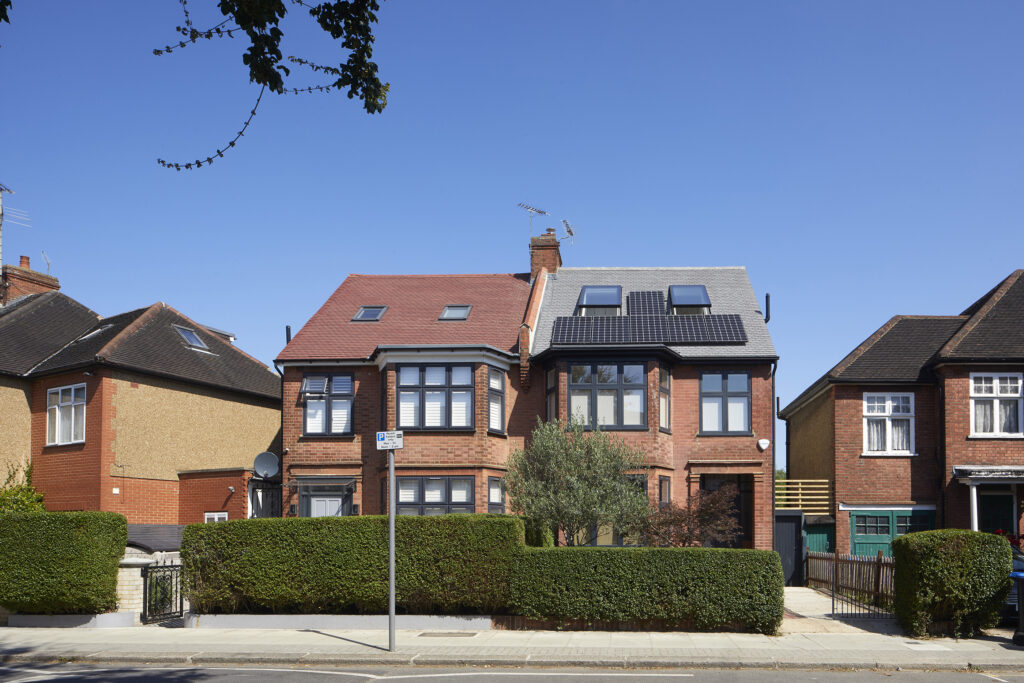
Chapter 3: The Evolution of the Challenge: Refined Goals for 2021
In its relentless pursuit of a sustainable future, the Royal Institute of British Architects (RIBA) has consistently adapted and refined its approach to the 2030 Climate Challenge. Since its inauguration in 2019, this initiative has undergone a significant transformation, ushering in Version 2 in 2021. This evolution not only demonstrates RIBA’s commitment to addressing the climate crisis but also reflects the dynamic nature of the architectural profession’s response to the challenge. Sustainable architects have been key contributors to this process, shaping and embracing the refined goals set forth in this updated version.
The Ongoing Climate Crisis: A Call for Adaptation
The climate crisis continues to escalate, making it imperative for organisations like RIBA to adapt and strengthen their initiatives. Record-breaking heatwaves, catastrophic wildfires, and devastating storms serve as constant reminders of the urgency of the situation. Sustainable architects have been at the forefront, advocating for more ambitious goals and practical strategies to combat climate change.
Version 2: An Aligned and Inclusive Approach
Version 2 (2021) of the 2030 Climate Challenge represents a significant step forward in aligning RIBA’s objectives with broader industry bodies. Recognising that a collaborative approach is essential, RIBA has worked closely with other stakeholders, including architectural associations, environmental organisations, and government bodies, to create a unified front against climate change. This alignment ensures that the goals set forth in the challenge resonate with the wider industry, fostering greater adoption and impact.
Incorporating the Latest Guidance
Sustainable architects understand that staying current with the latest industry standards and guidance is paramount to achieving meaningful change. Version 2 (2021) of the challenge reflects this ethos by incorporating the most up-to-date jointly authored guidance. This ensures that architects have access to the best practices and cutting-edge knowledge needed to design and construct environmentally responsible buildings.
Immediate Action Over Perfection
The updated challenge underscores a crucial philosophy: the necessity of immediate action, even if perfection isn’t yet achievable. Sustainable architects recognise that the climate crisis demands urgent responses and that waiting for the perfect solution is a luxury we can’t afford. Instead, they focus on incremental improvements, continuously refining their approaches, and learning from each project to make sustainable design more attainable and effective.
The Role of Sustainable Architects in Version 2
Sustainable architects are instrumental in driving Version 2 (2021) of the 2030 Climate Challenge. Their expertise in sustainable design, commitment to innovation, and dedication to environmental stewardship make them key contributors to the challenge’s evolution. They advocate for more ambitious targets, influence industry standards, and serve as beacons of inspiration for their peers. Their work not only transforms individual projects but also contributes to a broader shift towards a more sustainable built environment.
Chapter 3 Conclusion
As the world grapples with the escalating climate crisis, RIBA’s 2030 Climate Challenge continues to evolve, adapting to the changing landscape of sustainability. Version 2 (2021) represents a collaborative, inclusive, and action-oriented approach that resonates with the architectural community and industry stakeholders alike. Sustainable architects, with their unwavering commitment to the environment, play a pivotal role in shaping and embracing these refined goals. They understand that perfection may remain elusive, but immediate action is imperative. In this evolving challenge, sustainable architects stand as champions of progress, driving the architectural profession towards a more sustainable and resilient future.
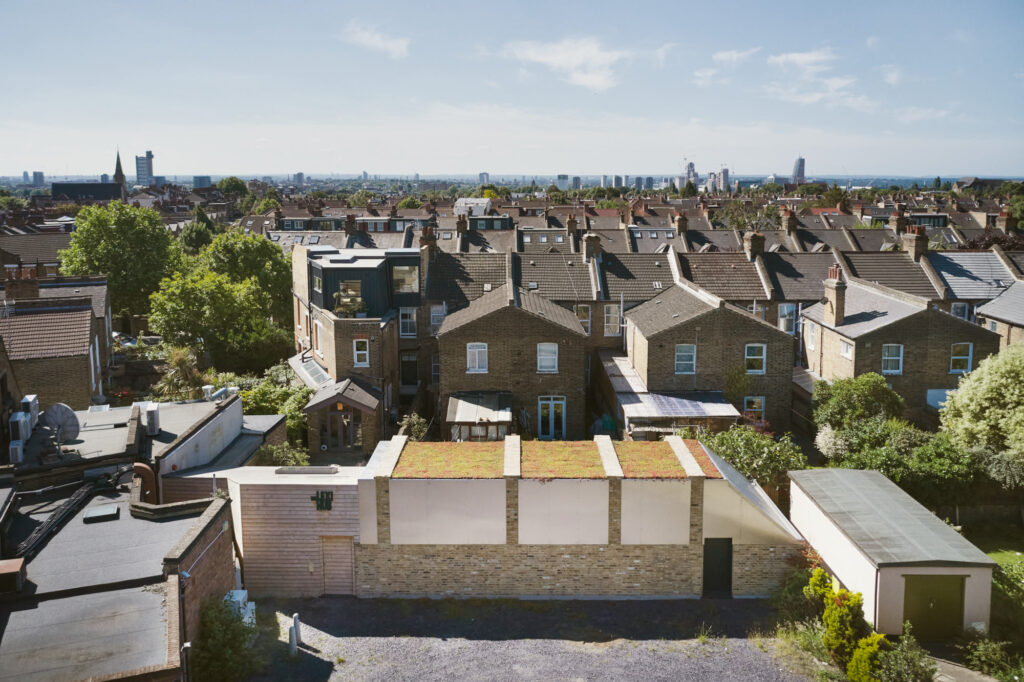
Chapter 4: Navigating the Ambitious Goals of RIBA’s 2030 Climate Challenge
The audacity of RIBA’s 2030 Climate Challenge is matched only by its feasibility. It is a call to action that beckons architects and the wider industry to make substantial and tangible contributions to the fight against climate change. The challenge sets out clear and ambitious targets, each meticulously designed to drive sustainability forward. Sustainable architects, with their innovative thinking and unwavering commitment to environmental stewardship, are pivotal in realising these objectives.
1. Reducing Operational Energy Demand by 60%
The first target of the challenge centres on the reduction of operational energy demand. Sustainable architects understand that buildings are responsible for a significant portion of global energy consumption and carbon emissions. To meet this ambitious goal, architects employ a range of strategies. These include harnessing renewable energy sources, enhancing insulation and airtightness, and integrating smart technologies for efficient energy management. Sustainable architects are adept at optimising building designs to significantly slash energy demand while maintaining comfort and functionality.
2. Decreasing Embodied Carbon by 40%
Embodied carbon, which accounts for emissions associated with a building’s construction materials and processes, is a critical aspect of sustainable design. Sustainable architects are well-versed in selecting low-carbon materials, promoting recycling and reuse, and reducing waste during construction. They also consider the carbon footprint of transportation and manufacturing processes. Through meticulous planning and innovative solutions, sustainable architects aim to achieve a 40% reduction in embodied carbon, contributing to a more sustainable built environment.
3. Reducing Potable Water Use by 40%
Water is a precious resource, and sustainable architects are keenly aware of the need to conserve it. The challenge’s target to reduce potable water use by 40% calls for the adoption of water-efficient fixtures, rainwater harvesting systems, and greywater recycling. Sustainable architects integrate these solutions seamlessly into building designs, reducing the strain on water resources while promoting responsible water management practices.
4. Meeting Core Health and Wellbeing Metrics
Beyond environmental sustainability, the challenge recognises the importance of human well-being in architectural design. Sustainable architects champion this cause by prioritising health and well-being metrics in their projects. They design spaces that promote natural light, good air quality, and access to green spaces. Moreover, they create environments that foster mental and physical health, enhancing the overall quality of life for building occupants.
Sustainable Architects: The Catalysts of Change
Sustainable architects are not merely tasked with meeting these challenging targets; they are the catalysts of change within the architectural profession. Their holistic approach to design integrates sustainability into every facet of the built environment. They push boundaries, challenge conventions, and demonstrate that ambitious sustainability goals are not only feasible but also economically and environmentally advantageous.
Chapter 4 Conclusion
RIBA’s 2030 Climate Challenge presents a bold vision for the future of architecture, one in which sustainability is at the core of every design and construction project. The granular targets set forth in this challenge may seem ambitious, but they are well within reach, thanks to the dedication and expertise of sustainable architects. These architects, with their commitment to reducing operational energy demand, decreasing embodied carbon, conserving water, and prioritising health and wellbeing, are reshaping the built environment for the better. As they navigate the complexities of sustainable design, they inspire and lead the way towards a more sustainable, resilient, and harmonious future for all.
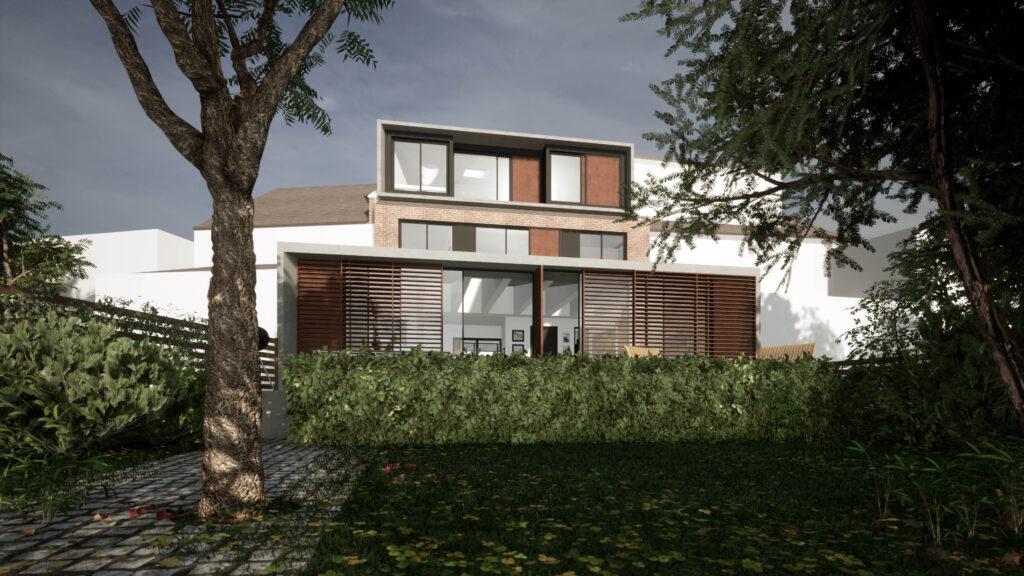
Chapter 5: Beyond Just Numbers: RIBA’s Advocacy for Holistic Design
In the journey towards a sustainable future, RIBA’s 2030 Climate Challenge stands as a pivotal beacon, guiding the architectural community towards a net-zero carbon future. Yet, it is essential to recognise that this challenge is about more than just achieving numerical targets; it represents a profound transformation in architectural design thought. Sustainable architects are not only striving to meet specific goals but also embracing outcome-based design methodologies that transcend mere numbers. This holistic approach is a fundamental paradigm shift, where every architectural project, regardless of external constraints, aspires to align itself with the 2030 targets from the outset.
Reimagining Architectural Design Thought
The traditional approach to architectural design often revolved around aesthetics, functionality, and immediate project constraints. However, the 2030 Climate Challenge challenges architects to reimagine their thought processes. Sustainable architects understand that design decisions made at the project’s inception can have a lasting impact on its environmental performance. They advocate for a broader perspective that encompasses not only the physical aspects of a building but also its long-term ecological footprint.
Outcome-Based Design: The New Imperative
The essence of outcome-based design is to prioritise the final result over the initial constraints. Sustainable architects are adept at envisioning the end goal – a sustainable, energy-efficient, and carbon-neutral building – and then working backwards to achieve it. This approach compels architects to think holistically, considering not only energy efficiency but also embodied carbon, water use, and the overall environmental and social impact of their designs.
Immediate Alignment with 2030 Targets
One of the most significant aspects of this holistic design approach is the insistence on immediate alignment with the 2030 targets. Sustainable architects recognise that waiting until the later stages of a project to consider sustainability can be too late. Instead, they advocate for incorporating sustainability into the project’s DNA from the very beginning. This proactive stance ensures that sustainability is not an afterthought but an integral part of the design process.
Overcoming External Hindrances
While the 2030 Climate Challenge may seem ambitious, sustainable architects view it as a non-negotiable imperative. They understand that external constraints, such as budget limitations or regulatory hurdles, should not be used as excuses to postpone sustainability goals. Instead, they see these challenges as opportunities for creativity and innovation. Sustainable architects work tirelessly to find solutions that make sustainable design not only achievable but also cost-effective and compliant with regulations.
Sustainable Architects: Pioneers of Holistic Design
Sustainable architects are the pioneers of this new era of architectural design. They are the architects of the future, forging a path towards a more sustainable and resilient built environment. Their commitment to outcome-based design methodologies transcends the limitations of traditional practices. They envision a world where every building, regardless of its size or purpose, is a testament to sustainability and environmental responsibility.
Chapter 5 Conclusion
RIBA’s 2030 Climate Challenge is not just a set of numerical targets; it represents a profound shift in architectural design thought. Sustainable architects champion this transformation, advocating for outcome-based design methodologies that prioritise sustainability from the project’s inception. Their commitment to immediate alignment with the 2030 targets and their ability to overcome external hindrances make them the vanguard of change within the architectural profession. As they continue to push the boundaries of design, sustainable architects are reshaping the way we conceive, construct, and inhabit our built environment, leaving a lasting legacy of sustainability for generations to come.
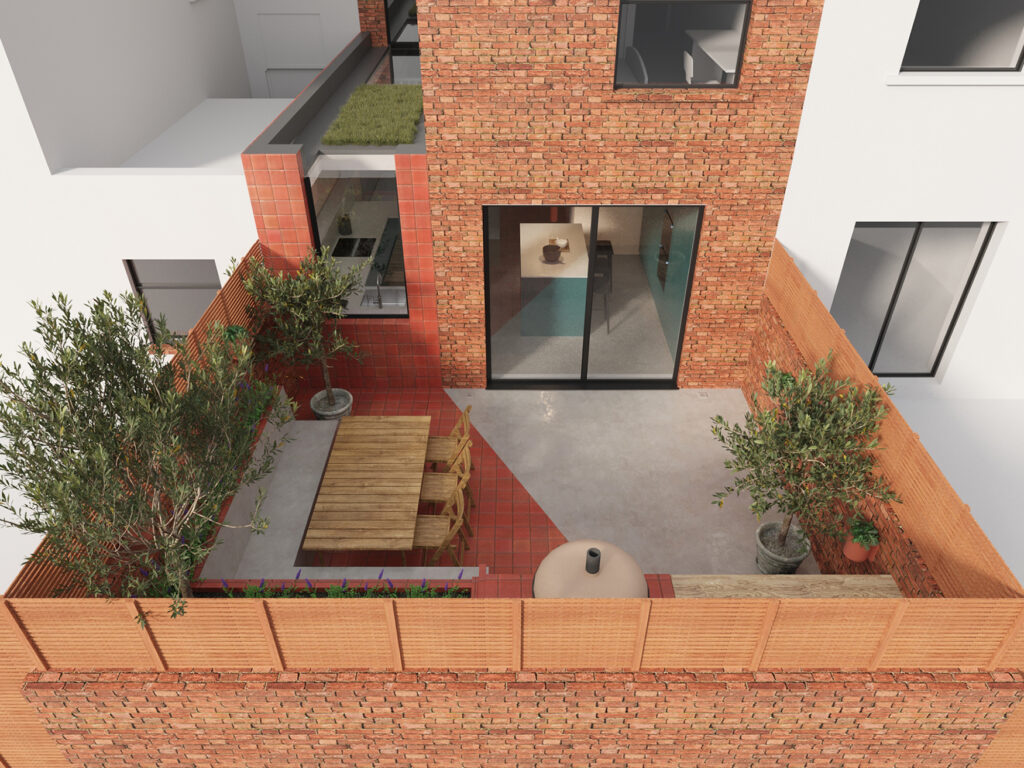
Chapter 6: The Power of Data: Monitoring and Reporting in the 2030 Climate Challenge
In the quest for a more sustainable built environment, RIBA’s 2030 Climate Challenge harnesses a potent tool – data. This transformative initiative recognises that the collection and analysis of data are paramount in the pursuit of sustainability goals. Sustainable architects, as the driving force behind this movement, understand the pivotal role of data in monitoring and reporting on building performance. Through the submission of anonymised project data, they contribute to a collective endeavour that not only tracks progress but also identifies opportunities for improvement.
The Cornerstone of the 2030 Climate Challenge
Data is the cornerstone upon which the 2030 Climate Challenge is built. Participating firms are tasked with submitting comprehensive data related to their projects. This data encompasses various aspects, from energy consumption and water use to embodied carbon and overall building performance. By compiling this information, the challenge creates a comprehensive dataset that serves as a barometer for sustainability within the architectural community.
The Power of Anonymised Data
The significance of anonymised data cannot be overstated. Sustainable architects recognise the need to protect the confidentiality of individual projects while still leveraging the collective insights that data can provide. Anonymisation ensures that sensitive project details remain confidential, allowing firms to share their experiences and performance without compromising their proprietary information.
Understanding Building Performance Trends
Data is a powerful lens through which to examine building performance trends. Sustainable architects use this data to gain valuable insights into how design choices, construction methods, and operational practices impact a building’s environmental footprint. By identifying patterns and trends, architects can refine their approaches, making informed decisions that drive sustainability forward.
Identifying Areas of Improvement
The analysis of data goes beyond merely assessing success; it also highlights areas where improvement is needed. Sustainable architects view data as a diagnostic tool that helps them pinpoint weaknesses in their designs or practices. By identifying these areas of improvement, architects can iterate and refine their processes, driving continuous progress towards the 2030 targets.
Sustainable Architects: Data-Driven Decision Makers
Sustainable architects are adept at making data-driven decisions. They use the insights derived from the 2030 Climate Challenge data to inform their design choices, select materials with lower embodied carbon, and implement energy-efficient technologies. This data-centric approach empowers architects to create buildings that not only meet sustainability targets but also exceed them.
Chapter 6 Conclusion
In the 2030 Climate Challenge, data emerges as a formidable ally in the pursuit of sustainability. Sustainable architects, as the custodians of this data, understand its transformative potential. Through the submission of anonymised project data, they contribute to a collective effort that monitors progress, identifies trends, and pinpoints areas of improvement. Data is not merely a tool for reporting; it is a catalyst for change. It empowers architects to make informed, data-driven decisions that lead to a more sustainable and resilient built environment. As the architectural profession continues to evolve, sustainable architects stand as champions of data-driven sustainability, driving positive change for the benefit of future generations.
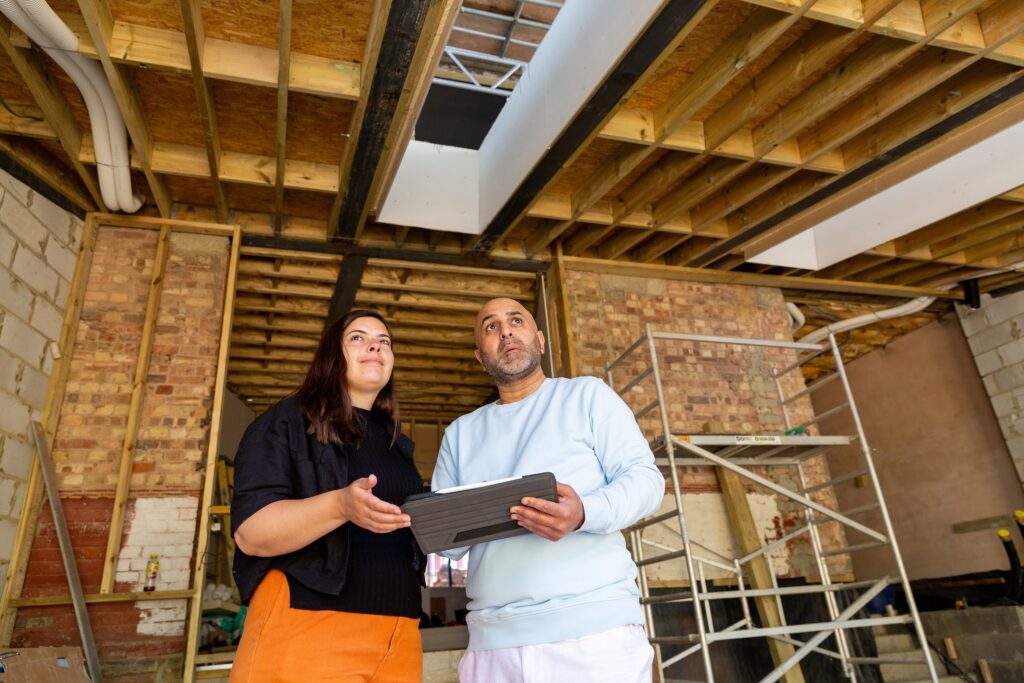
Chapter 7: The Blueprint for Success: The 2030 Climate Challenge Checklist
In the pursuit of sustainability, the 2030 Climate Challenge offers a well-defined blueprint for success. This comprehensive checklist serves as a guiding light for Chartered Practices, providing a clear roadmap to navigate the complex terrain of sustainable design and construction. It encompasses a multitude of facets, from striving to meet reduced operational energy and embodied carbon targets to focusing on water efficiency and indoor health. Sustainable architects, armed with this invaluable tool, are equipped to chart a course towards a more sustainable, resilient, and environmentally responsible built environment.
Setting the Foundation: Reduced Operational Energy
Reducing operational energy demand is a fundamental goal in the 2030 Climate Challenge checklist. Sustainable architects understand that this involves a holistic approach to design, encompassing building orientation, insulation, efficient HVAC systems, and the integration of renewable energy sources. They use this checklist as a compass to ensure that their designs prioritise energy efficiency from the outset.
Minimising Environmental Impact: Embodied Carbon Targets
Embodied carbon is another critical aspect of the checklist. Sustainable architects are adept at selecting low-carbon materials, considering their life cycle impacts, and promoting the use of sustainable and recycled resources. By aiming to meet embodied carbon targets, architects minimise the environmental footprint of their projects, contributing to a more sustainable built environment.
Conserving a Precious Resource: Water Efficiency
Water efficiency is an integral part of the checklist. Sustainable architects recognise that water is a finite resource and that its responsible use is paramount. They employ strategies such as rainwater harvesting, greywater recycling, and the specification of water-efficient fixtures to meet water efficiency targets. This not only reduces the strain on water resources but also lowers operational costs for building owners.
Prioritising Human Wellbeing: Indoor Health Metrics
The checklist extends beyond environmental concerns to focus on the health and well-being of building occupants. Sustainable architects are champions of indoor health metrics, which encompass factors like air quality, natural lighting, and access to green spaces. They design spaces that promote physical and mental health, ensuring that occupants thrive in a supportive and nurturing environment.
Sustainable Architects: Navigators of Sustainability
Sustainable architects are the navigators of sustainability, using the 2030 Climate Challenge checklist as their compass. They understand that achieving these targets requires a holistic approach to design and construction. They leverage their expertise to ensure that every project aligns with the checklist’s objectives, transforming buildings into beacons of sustainability and environmental responsibility.
Chapter 7 Conclusion
The 2030 Climate Challenge checklist is more than just a list of targets; it is a blueprint for success in the pursuit of sustainability. Sustainable architects view this checklist as an invaluable tool that guides their decision-making processes, from design conception to project completion. By setting their sights on reduced operational energy, embodied carbon targets, water efficiency, and indoor health metrics, architects are not only meeting the challenge but also exceeding it. As they continue to evolve the architectural profession, sustainable architects are reshaping the built environment for a more sustainable, resilient, and harmonious future for all.
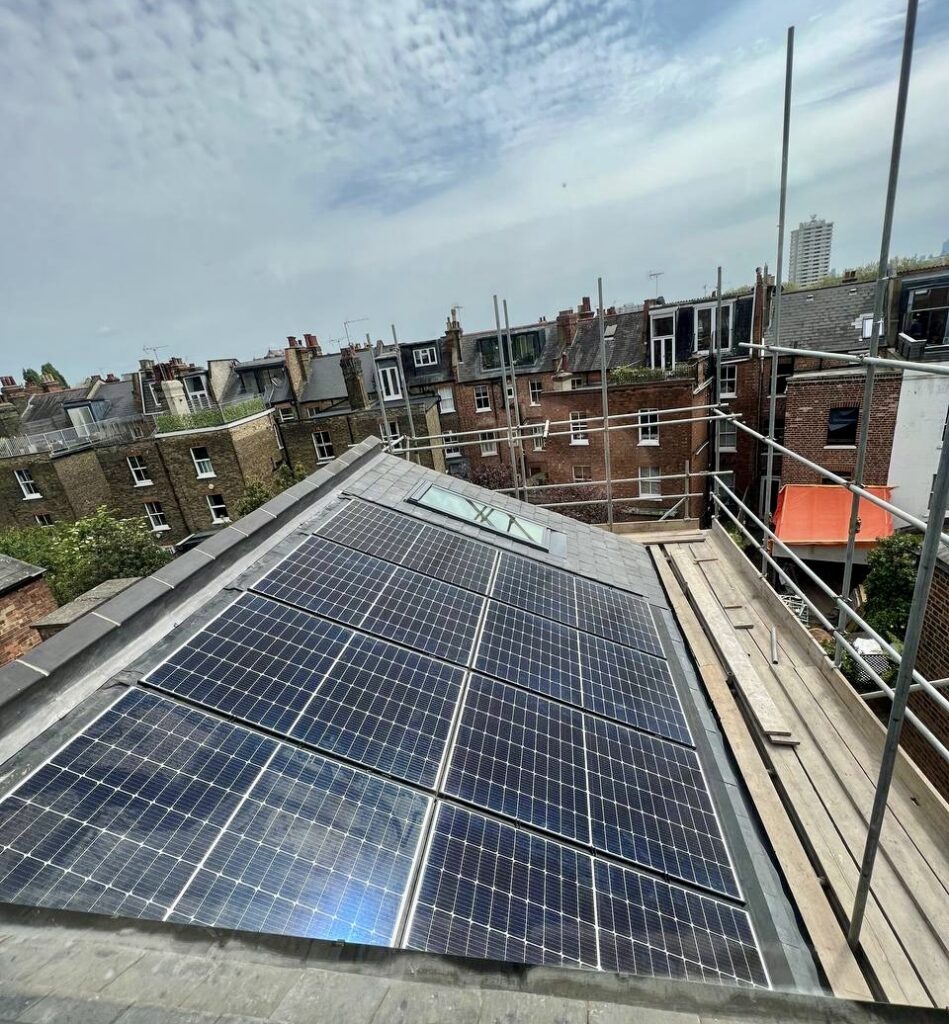
Chapter 8: Emphasising Existing Infrastructure: Retrofitting as a Sustainable Strategy
In the pursuit of sustainability, the architectural world is undergoing a paradigm shift. While new constructions have traditionally dominated the scene, there is a growing emphasis on retaining, reusing, and repurposing existing buildings. This transformative approach places retrofitting at the forefront of sustainable architectural strategies. Sustainable architects understand that retrofitting can be a game-changer, offering significant potential to reduce carbon footprints and usher in a more sustainable built environment when executed thoughtfully and strategically.
Redefining Sustainability Through Retrofitting
Sustainability in architecture has evolved beyond the creation of new eco-friendly structures. It now encompasses the responsible stewardship of existing infrastructure. Retrofitting, the process of upgrading and enhancing the performance of older buildings, offers an opportunity to breathe new life into the built environment. Sustainable architects are at the forefront of this movement, recognising that retrofitting aligns with the principles of resource conservation, reduced waste, and carbon reduction.
The Carbon-Reducing Potential of Retrofitting
One of the most compelling aspects of retrofitting is its potential to significantly reduce carbon footprints. Sustainable architects understand that existing buildings often have high embodied carbon, which refers to the emissions associated with their construction materials. By retrofitting, architects can extend the life of these structures, effectively “reusing” their embodied carbon. This reduces the need for new construction and mitigates the carbon emissions typically associated with it.
Preserving Architectural Heritage
Retrofitting is not just about carbon reduction; it is also a means of preserving architectural heritage. Many older buildings possess unique historical and cultural significance. Sustainable architects recognise the value of maintaining this heritage while making these structures functional and energy-efficient for contemporary use. This harmonious blend of preservation and modernisation represents a holistic approach to sustainability.
Energy Efficiency and Modern Comfort
Sustainable architects are adept at transforming older buildings into energy-efficient, comfortable spaces. They utilise cutting-edge technologies such as improved insulation, energy-efficient windows, and advanced HVAC systems to reduce energy consumption and enhance occupant comfort. By breathing new life into existing structures, architects make them relevant, functional, and sustainable for today’s needs.
Overcoming Retrofitting Challenges
While retrofitting holds immense promise, it comes with its own set of challenges. Sustainable architects are experts in navigating these hurdles, from working within existing structural limitations to complying with modern building codes and standards. They approach each retrofitting project as a unique opportunity to showcase their innovative problem-solving skills and dedication to sustainability.
Sustainable Architects: Champions of Retrofitting
Sustainable architects are the champions of retrofitting as a sustainable strategy. They understand that the built environment is a vast resource that can be harnessed to address climate change and environmental degradation. Retrofitting is not just about modifying buildings; it is about reshaping the future of architecture and embracing the transformative potential of existing infrastructure.
Chapter 8 Conclusion
In the pursuit of sustainability, sustainable architects are leading the way by emphasising the significance of retrofitting existing infrastructure. This approach expands the definition of sustainability, promoting the preservation of architectural heritage, reducing carbon footprints, and enhancing energy efficiency and modern comfort. Retrofitting is more than just a design strategy; it is a commitment to making the most of our existing resources and shaping a more sustainable, resilient, and harmonious built environment for generations to come.
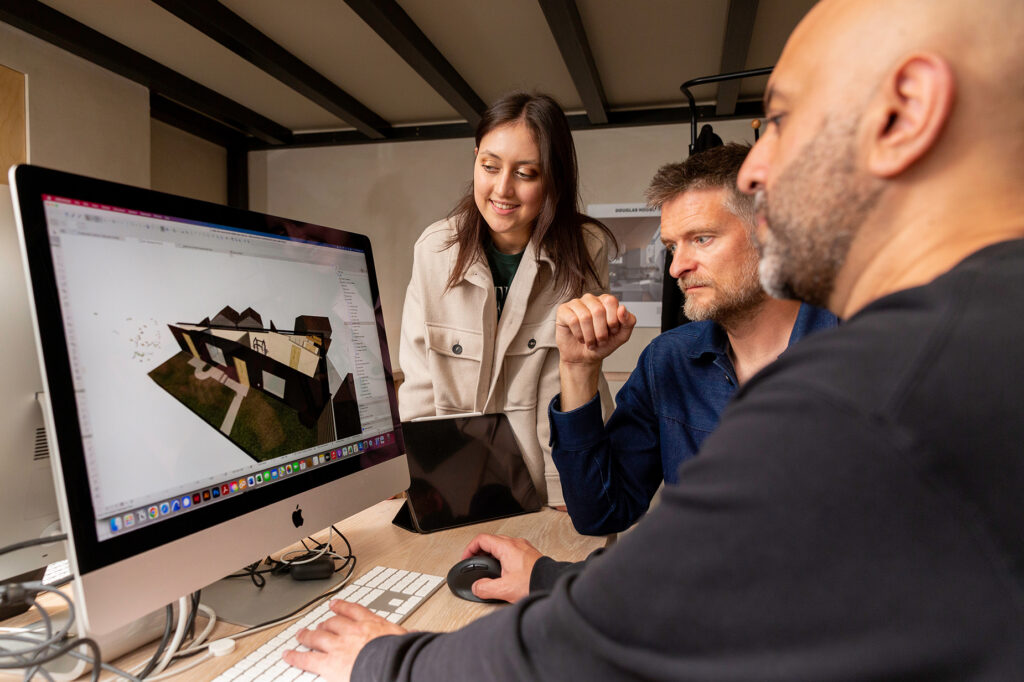
Chapter 9: The Role of Clients and Partnerships in the 2030 Climate Challenge
The success of the 2030 Climate Challenge is a collaborative endeavour that extends beyond the realm of sustainable architects. Clients, as key stakeholders in the architectural process, play an indispensable role in realising the ambitious goals set forth by RIBA. Their engagement, commitment, and willingness to collaborate effectively are pivotal in shaping a sustainable built environment. RIBA, recognising the importance of client involvement, offers valuable tools such as client guides to facilitate this collaboration and foster a shared vision of sustainability.
The Client’s Vital Role
Clients are more than just patrons of architectural projects; they are active participants in the journey towards sustainability. Sustainable architects understand that a client’s commitment to sustainability is a catalyst for change. Clients who embrace sustainability as a core value can inspire architects to push the boundaries of design and ensure that sustainability is integrated into every aspect of the project.
Buy-In and Shared Values
One of the first steps in achieving alignment between clients and sustainable architects is securing client buy-in. Sustainable architects advocate for open and transparent discussions with clients, ensuring that sustainability objectives are clearly defined and shared. Clients who align their values with sustainability goals are more likely to support innovative design solutions and sustainable building practices.
Collaborative Partnerships
Effective collaboration between clients and sustainable architects is the cornerstone of success in the 2030 Climate Challenge. Sustainable architects view clients as partners in the journey towards sustainability, valuing their input and expertise. Together, they work to identify sustainable design strategies, evaluate the environmental and economic benefits, and make informed decisions that align with the challenge’s objectives.
RIBA’s Client Guides
Recognising the pivotal role of clients, RIBA provides valuable resources such as client guides. These guides serve as informative tools that educate clients about the significance of sustainability and their role in the process. They offer insights into sustainable design principles, energy efficiency, and environmental considerations, empowering clients to make informed decisions that align with the challenge’s goals.
Sustainable Architects as Guides
Sustainable architects act as guides and advocates, helping clients navigate the complexities of sustainability. They provide clients with the knowledge and expertise needed to make informed choices that benefit not only the project but also the environment. Sustainable architects view their role as facilitators, creating a bridge between client aspirations and sustainability objectives.
Chapter 9 Conclusion
In the 2030 Climate Challenge, the role of clients and partnerships is pivotal in realising the vision of a sustainable built environment. Sustainable architects recognise that collaboration with clients is essential for success. Clients who share the values of sustainability and engage actively in the process can inspire innovative design solutions and promote sustainable building practices. With the support of resources like RIBA’s client guides, clients are empowered to make informed decisions that align with the challenge’s goals. Sustainable architects, acting as guides and advocates, navigate this collaborative journey, ensuring that the built environment of the future is not only sustainable but also a testament to the power of effective partnerships. Together, they shape a more sustainable, resilient, and harmonious future for all.
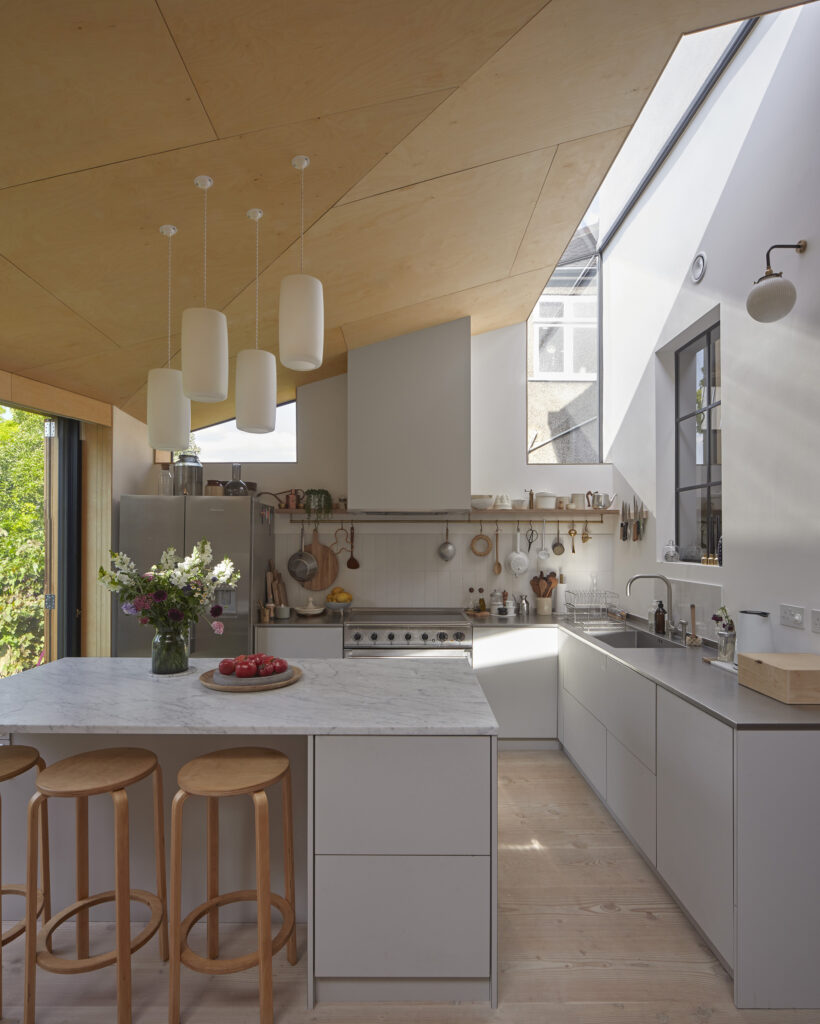
Chapter 10: The Path Forward: Continuous Adaptation and Growth
The 2030 Climate Challenge is a dynamic and ever-evolving initiative that exemplifies the spirit of progress and sustainability. Rooted in the ethos of environmental responsibility, it acknowledges that the journey towards a sustainable built environment is not static; rather, it is a continuous and adaptive process. Sustainable architects understand that the challenge’s targets and strategies are not set in stone; they will inevitably refine further as new research and sectoral insights emerge. As architects, our duty is to keep pace with these changes, embrace continuous adaptation and growth, and lead the way in sustainable design.
The Beauty of Evolution
One of the remarkable aspects of the 2030 Climate Challenge is its capacity for evolution. Sustainable architects appreciate that this challenge is not a rigid set of rules but a framework that evolves in response to emerging knowledge and shifting paradigms. It is a living testament to the architectural profession’s commitment to addressing the climate crisis head-on.
Ongoing Research and Insights
Sustainable architects are avid consumers of knowledge and information, constantly seeking to expand their understanding of sustainable design principles. They recognise that the field of sustainability is dynamic, with ongoing research yielding fresh insights into energy efficiency, carbon reduction, materials innovation, and more. By staying abreast of these developments, architects can integrate the latest advancements into their designs and projects.
Refining Targets and Strategies
The targets and strategies of the 2030 Climate Challenge will undoubtedly be refined further as new information becomes available. Sustainable architects view this refinement as an opportunity to push the boundaries of sustainability even further. They are ready to embrace more ambitious goals, incorporate innovative technologies, and adapt their practices to align with the evolving standards of sustainability.
Leading the Way in Sustainable Design
Sustainable architects are not passive observers of change; they are leaders in sustainable design. They understand that their role extends beyond designing buildings; it includes advocating for sustainable practices within the profession and guiding clients towards more sustainable choices. By embodying the principles of continuous adaptation and growth, sustainable architects set the standard for their peers and inspire a collective commitment to sustainability.
A Vision of the Future
The path forward in the 2030 Climate Challenge is one of unwavering dedication to a sustainable future. Sustainable architects envision a built environment where every structure is a testament to sustainability, resilience, and environmental responsibility. They see a future where sustainable design is not an exception but the norm, where architects play a pivotal role in shaping a world that is in harmony with nature.
The 2030 Climate Challenge represents a call to action and a testament to the power of continuous adaptation and growth. Sustainable architects, as the vanguards of this movement, are committed to embracing change, staying informed, and leading the way in sustainable design. They recognise that the beauty of the challenge lies in its evolving nature, and they stand ready to refine their practices, set more ambitious targets, and inspire a collective commitment to a sustainable future. As architects, they shape not only buildings but also the world we inhabit, leaving a legacy of resilience, sustainability, and growth for generations to come.
In conclusion, the RIBA 2030 Climate Challenge isn’t just a set of targets; it’s a clarion call for architects worldwide. Having been a part of the architectural community for two decades, I genuinely believe this challenge can galvanise our fraternity, and together, we can script a sustainable, carbon-neutral future for our built environment.
If you would like to talk through your project with the team, please do get in touch at mail@risedesignstudio.co.uk or give us a call on 020 3290 1003
RISE Design Studio Architects company reg no: 08129708 VAT no: GB158316403 © RISE Design Studio. Trading since 2011.
